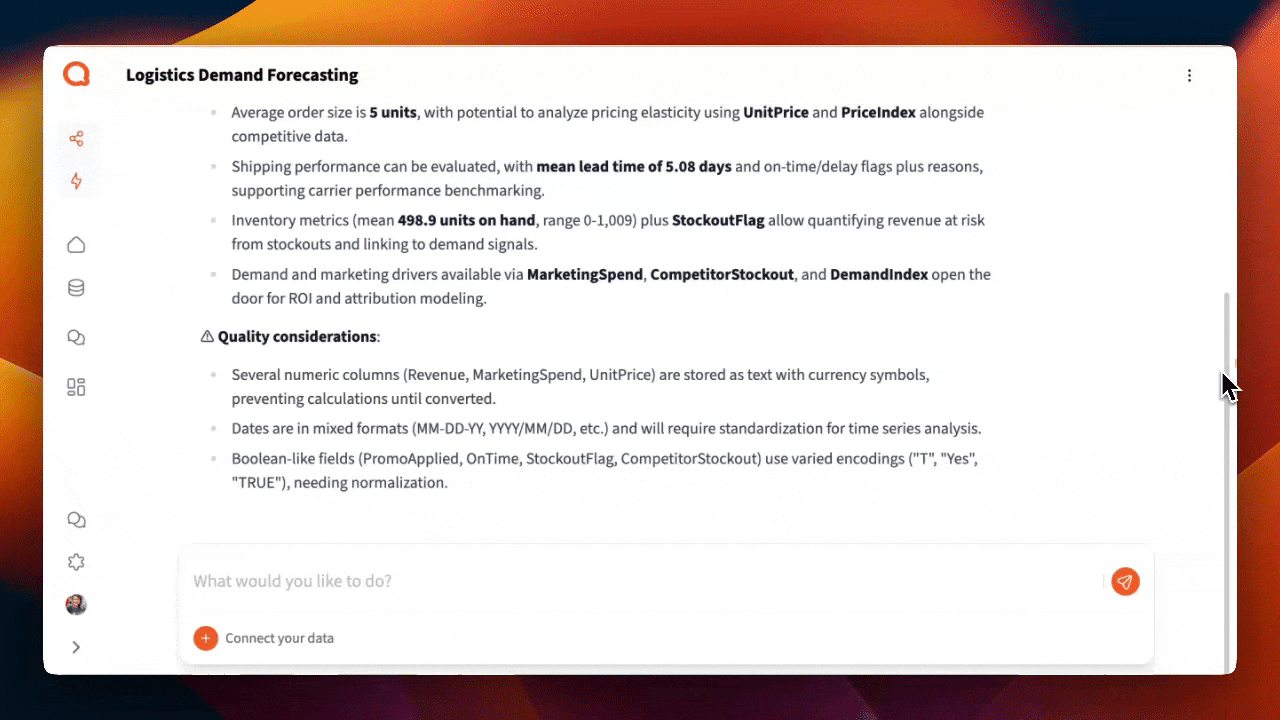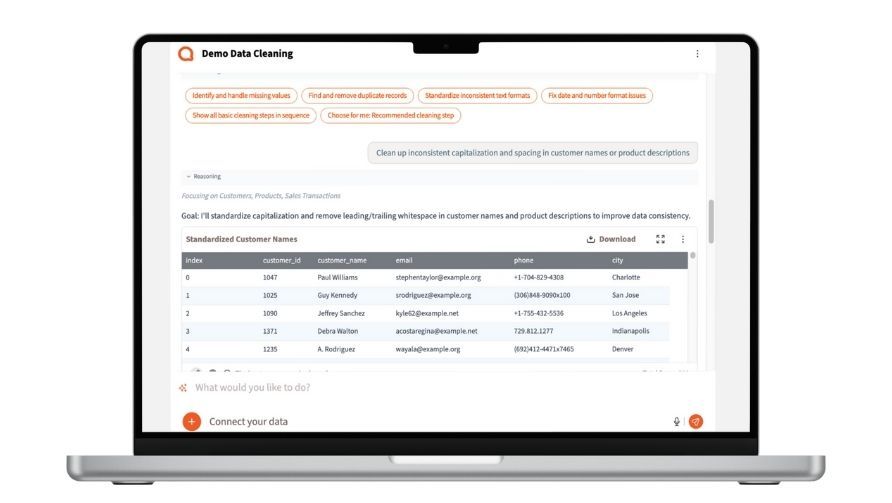Querri for Cleaning Lists How to Fix Dirty Data Before It Derails Your Decisions
Messy lists are the silent killer of business insights...duplicates, typos, and format issues all get in the way. Querri makes it easy to clean and standardize your lists so you can trust your data and move forward faster.
See Querri Clean Lists in Action
Watch our 2-minute demo to see how Querri transforms messy data into clean, reliable lists that drive better business decisions
Why Dirty Lists Wreck Your Analysis
Whether it's customer names, product SKUs, or email lists, most business data starts as a mess. Duplicates, inconsistent formats, typos, missing fields, and case mismatches make it hard to count, join, or analyze anything accurately. You spend hours patching things in spreadsheets, then hope nothing breaks the next time.


Querri Turns Messy Lists into Reliable, Ready-to-Use Data
Querri lets you upload your list—no matter how messy—and get clean, deduplicated, and standardized results in minutes.
Just describe what you want: "Clean up inconsistent capitalization and spacing in customer names," and Querri does the rest. It highlights issues, suggests fixes, and transforms your data automatically.
You can preview, edit, and export a clean list—ready for analysis, outreach, or reporting.
Business Outcomes of Cleaned Lists
Clean, Deduplicated Lists You Can Trust
Hours Saved on Manual Fixes
Better Reporting, Forecasting, and Insights
Higher Deliverability for Campaigns
Seamless Joins and Integrations
How-To in Five simple steps
Upload Your List
Connect a spreadsheet, CSV, or pull from Dropbox, Sheets, or another cloud source
Profile the Data
Querri scans for missing fields, inconsistent formats (like dates, phone numbers, states), and duplicated rows.
Clean It Up
Use prompts like: "Remove duplicates based on email and name" "Fix inconsistent state abbreviations" "Standardize casing for names and addresses" "Flag incomplete rows with missing phone numbers"
Review and Approve
See suggestions and choose what to apply. You stay in control.
Export or Automate
Download the cleaned list or set it to auto-clean on upload for future runs.

Best Practices
Start With a Clear Key
Know what field(s) define a duplicate—email, name + address, SKU, etc. This makes deduplication reliable.
Watch for Hidden Inconsistencies
"New York" vs. "NY", "Inc." vs "Incorporated"—small differences break joins and analyses. Use Querri to standardize categories and text fields
Segment Before You Clean (Optional)
If your list has multiple types of entries (e.g., vendors and customers), segment them first. Different types often need different rules.
Automate for Reuse
If you regularly pull data from the same source, set up auto-cleaning rules in Querri so your lists stay ready to go.

FAQs
What if I'm not sure what's wrong with the list?
Can Querri clean lists with names, emails, and phone numbers?
What if my list has data from multiple sources?
Can I customize the cleaning rules?
What formats can I export the cleaned data in?
Will Querri show me what was changed?
